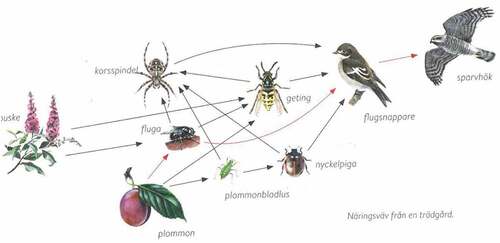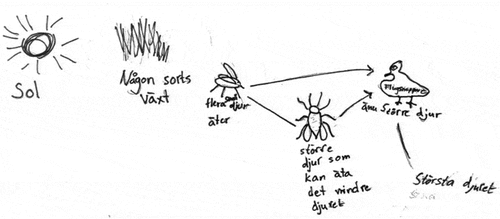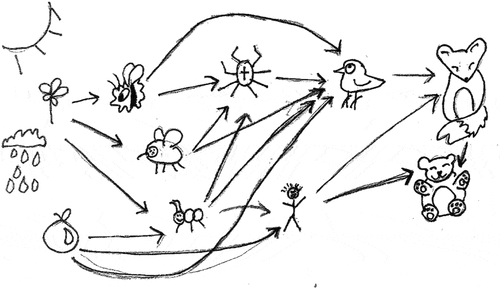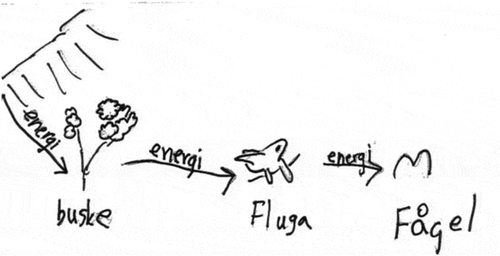Figures & data
Figure 1. Image distributed to students in the study for the final cooperative task. Translations of the Swedish names of plants and animals are, from left to right, bush, garden spider, fly, plum, aphid, wasp, ladybird, flycatcher and sparrow hawk. At the bottom right, the image is titled ‘Food web from a garden’ (Näringsväv från en trädgård). Illustration from the textbook Henriksson, TitaNO Biologi (Citation2015) published by Gleerups Utbildning AB. Copyright for the illustration: Oskar Jonsson.

Table 1. Codes identified from the students’ texts and drawings during the process of thematic analysis are interpreted into aspects and themes.
Table 2. Summary of the four models, constructed from students’ representations in texts and drawings.
Figure 2. Group E, Grade 6, illustrates that the sun, plants and animals are needed for the food web to function. The explanatory text in Swedish means, from left to right, sun, some sort of plant, several small animals eat, a bigger animal that can eat the small animal, an even bigger animal, the biggest animal. The word inside the bird to the right (‘flugsnappare’) means flycatcher.

Figure 3. Group F, Grade 6, illustrates that the sun, a plant and rain as well as animals are needed for the food web to function. The explanatory text in Swedish means, from left to right, sun, plant + rain, animals.

Figure 4. A drawing of a food web, Group I, Grade 6. The web has two starting points, a flower and a fruit, but only one ending point, a bear. In text, the group writes that the bear after death becomes energy for the flower, but this circulation of energy is not illustrated in the drawing. The need for sunshine and water in the ecosystem is illustrated to the left.

Figure 5. A drawing of a food chain, Group G, Grade 6. The chain starts with a sun to the left. The three arrows are marked with the word ‘energy’ (energi). From the sun, energy is transferred to a bush (buske), a fly (fluga) and a bird (fågel).

